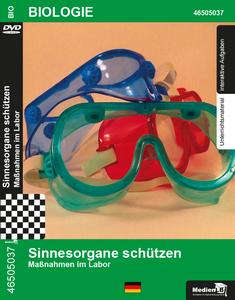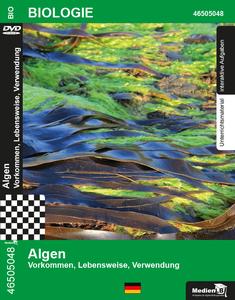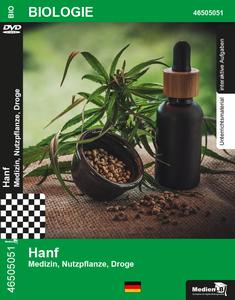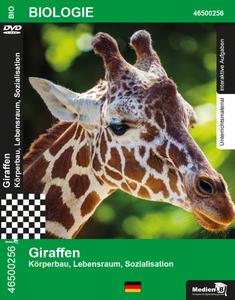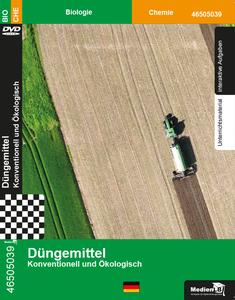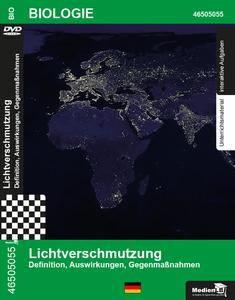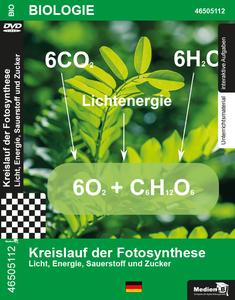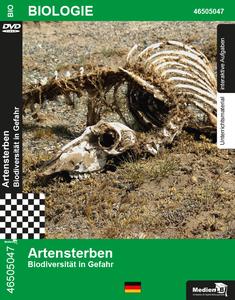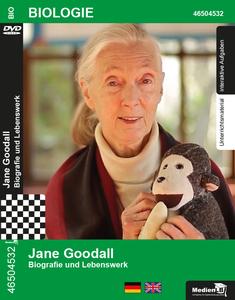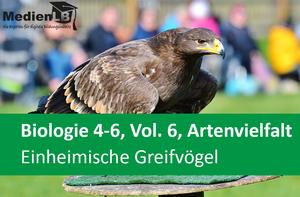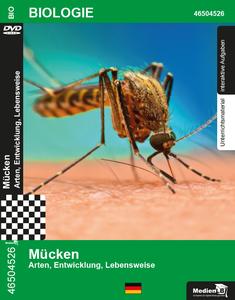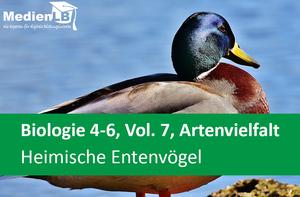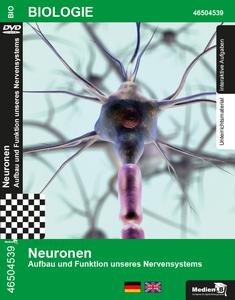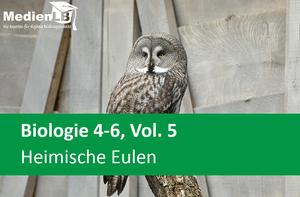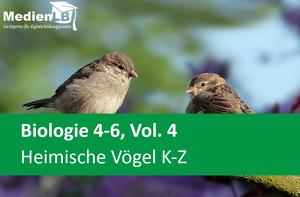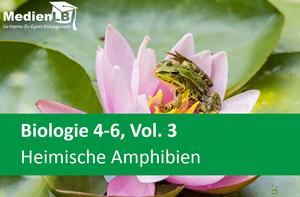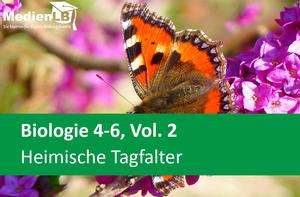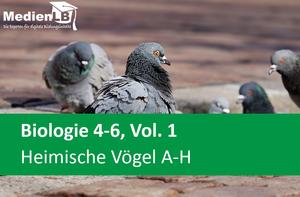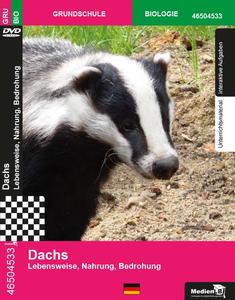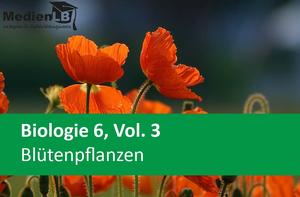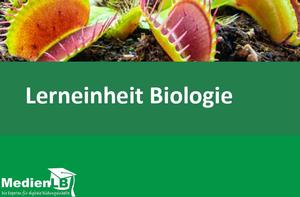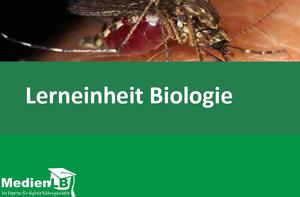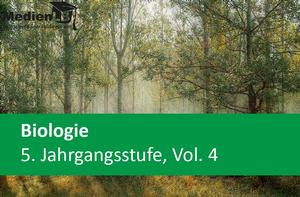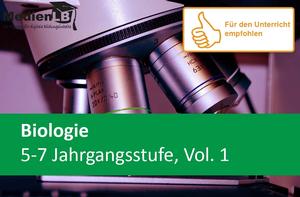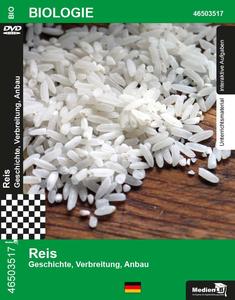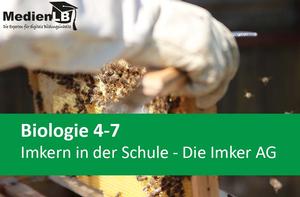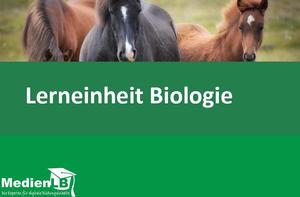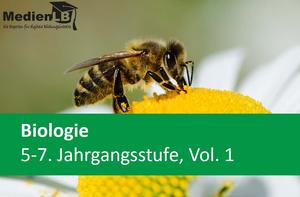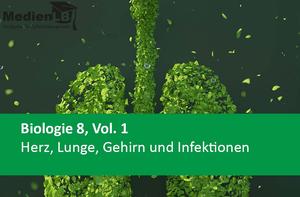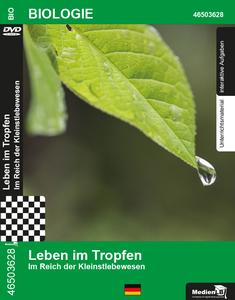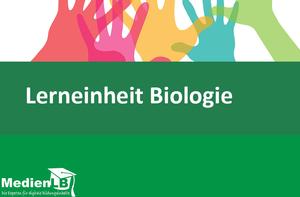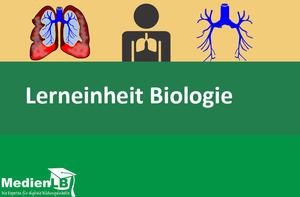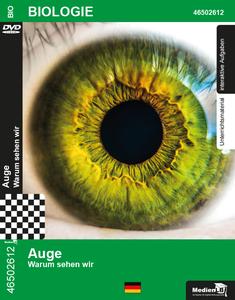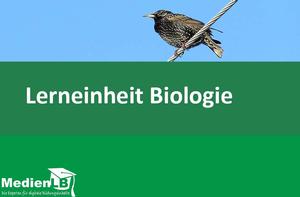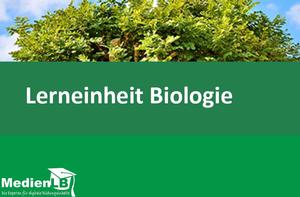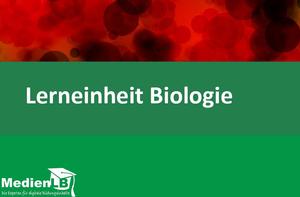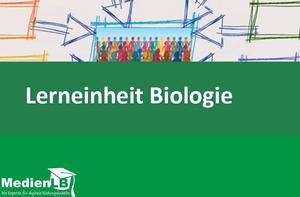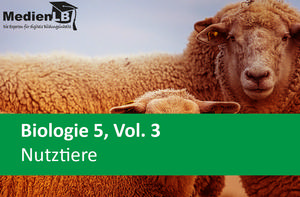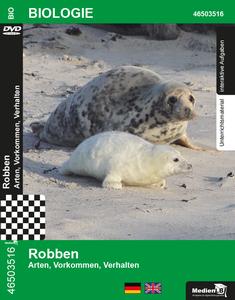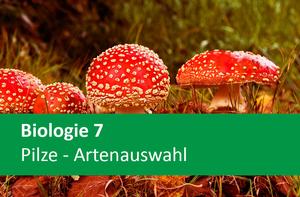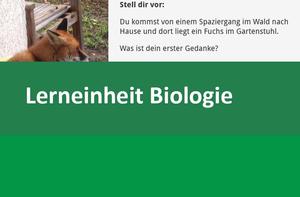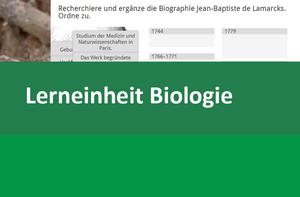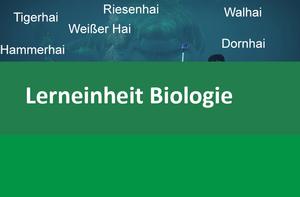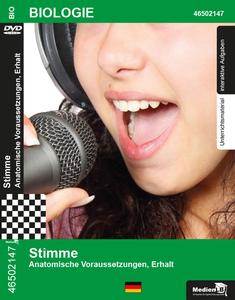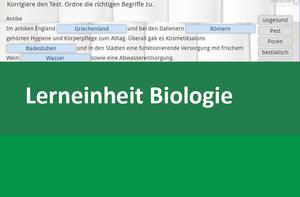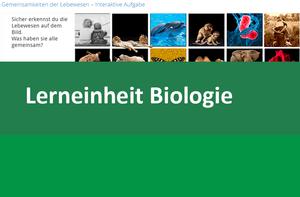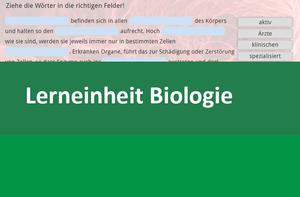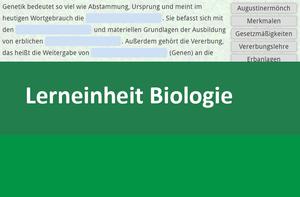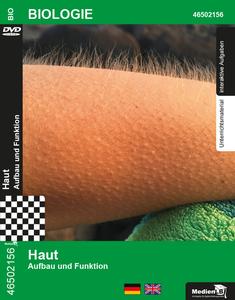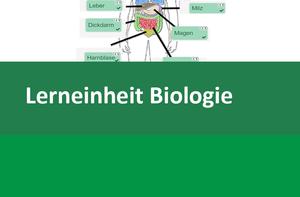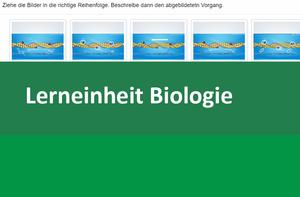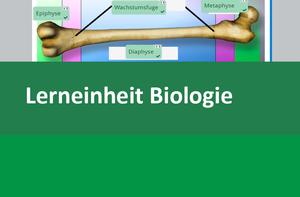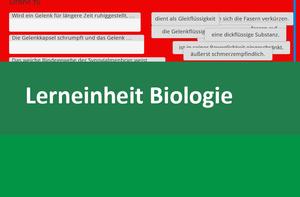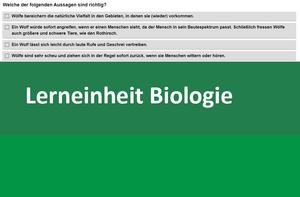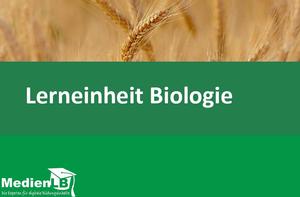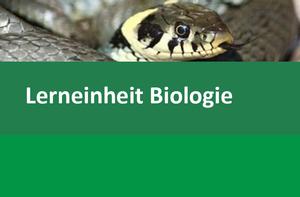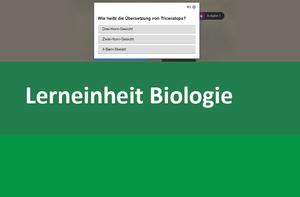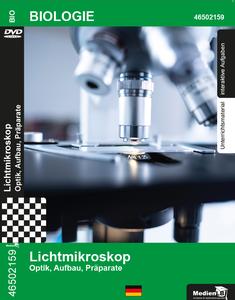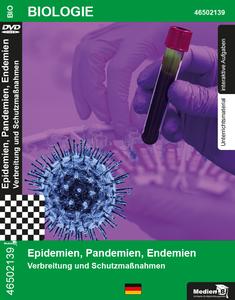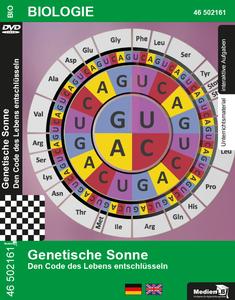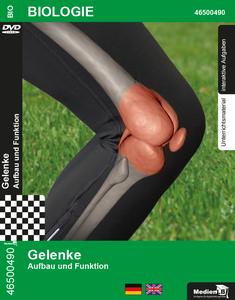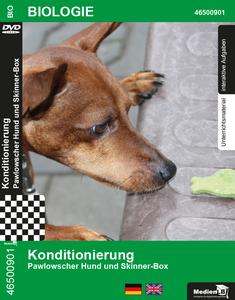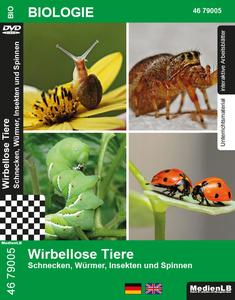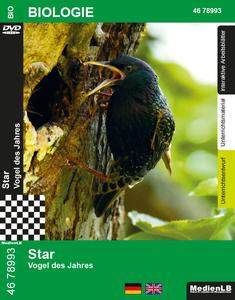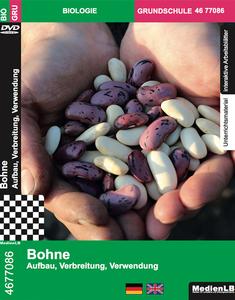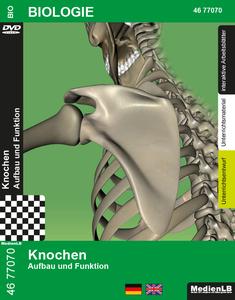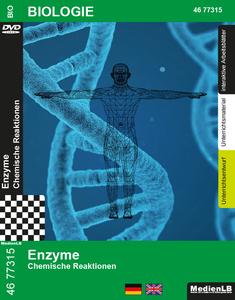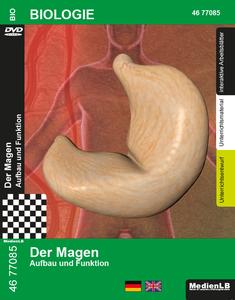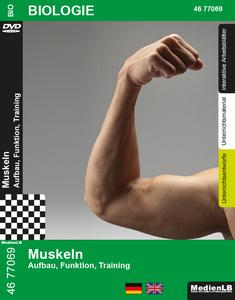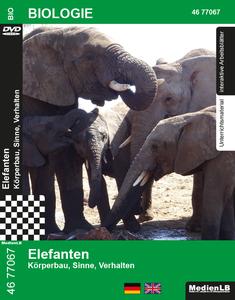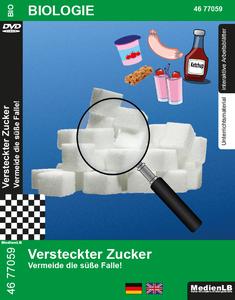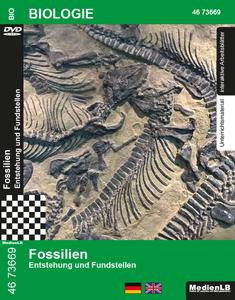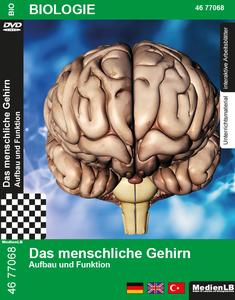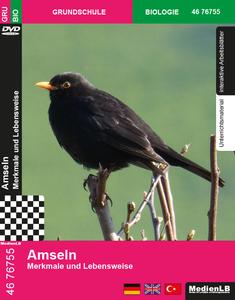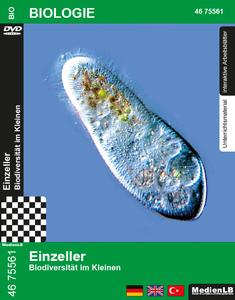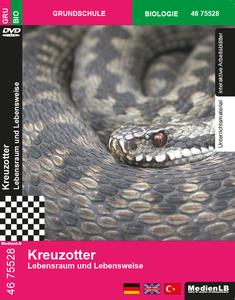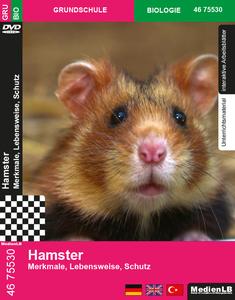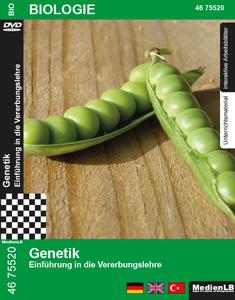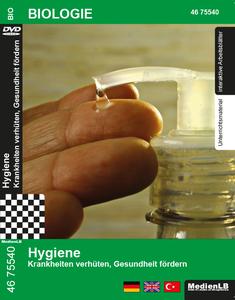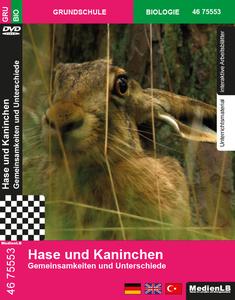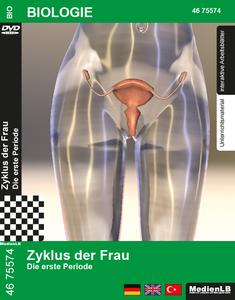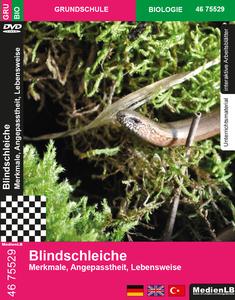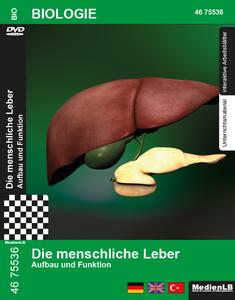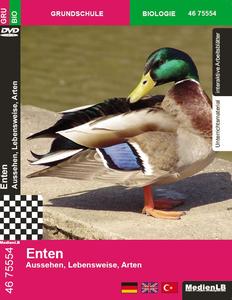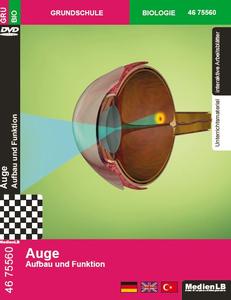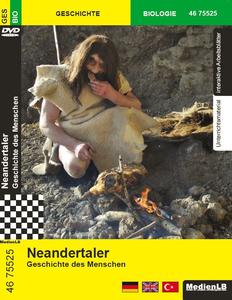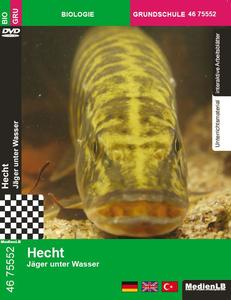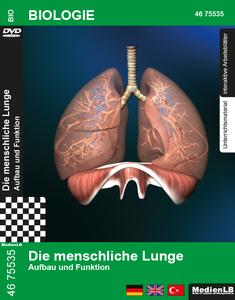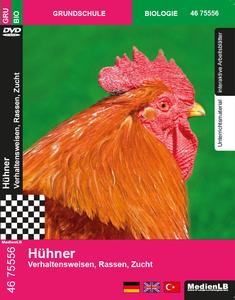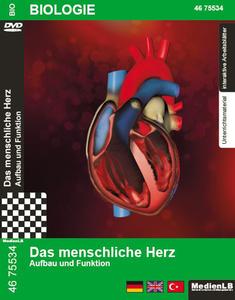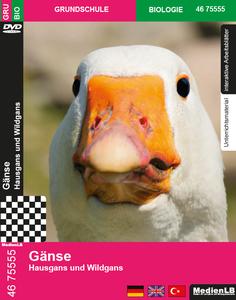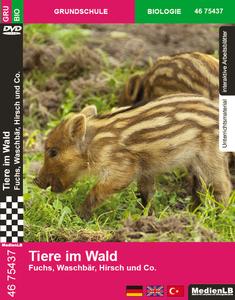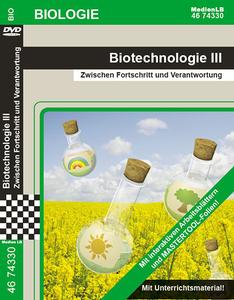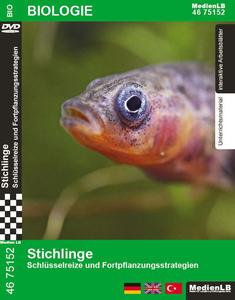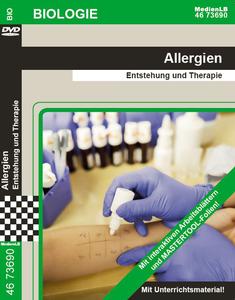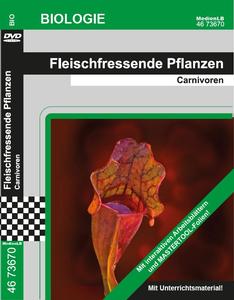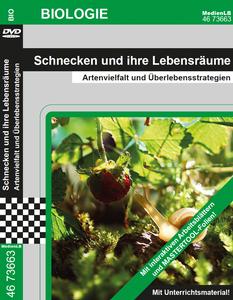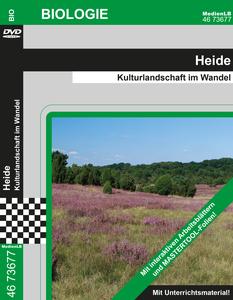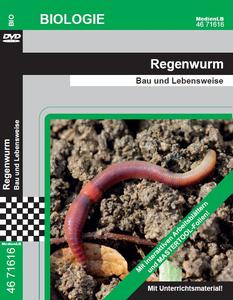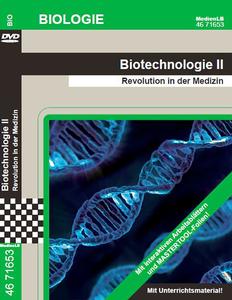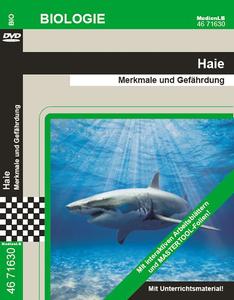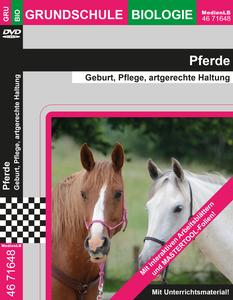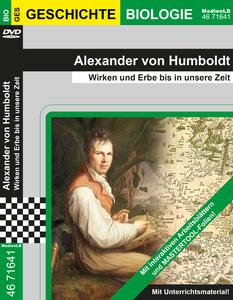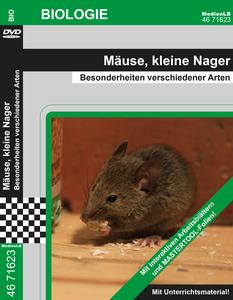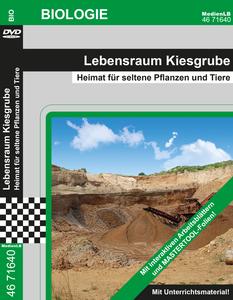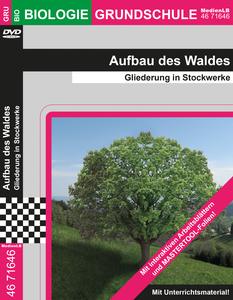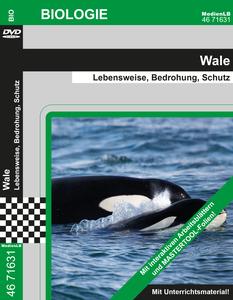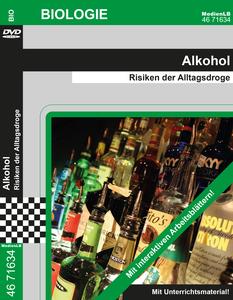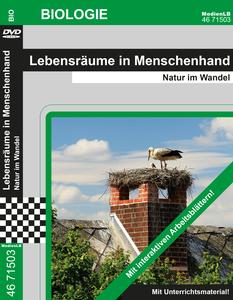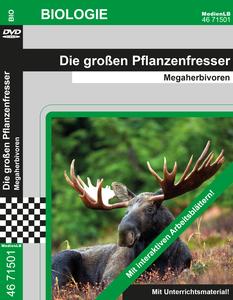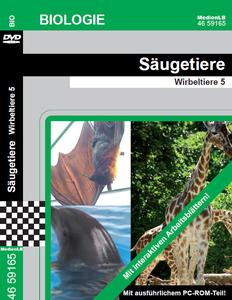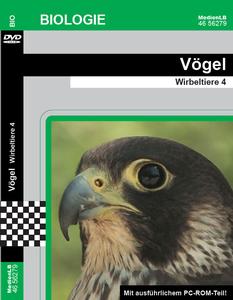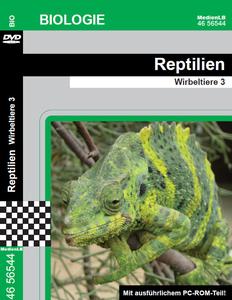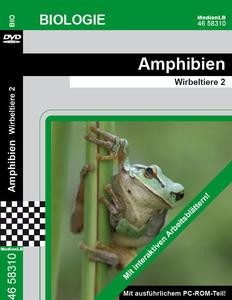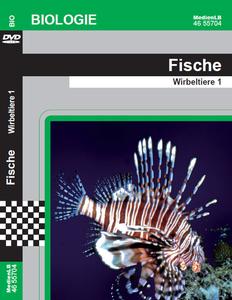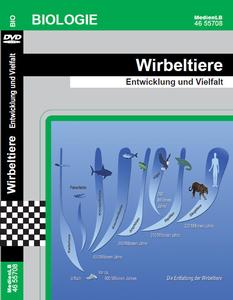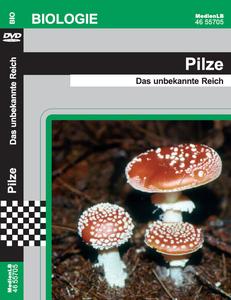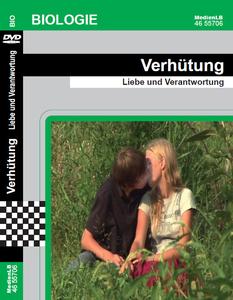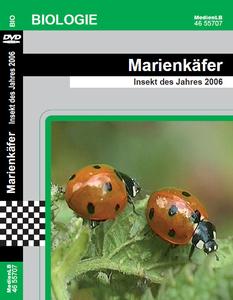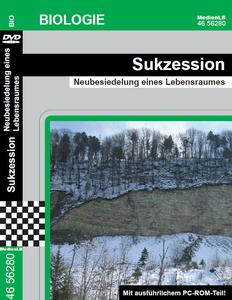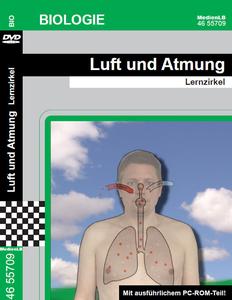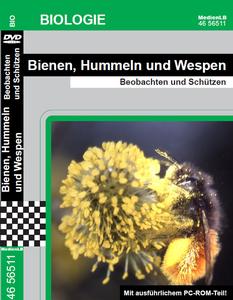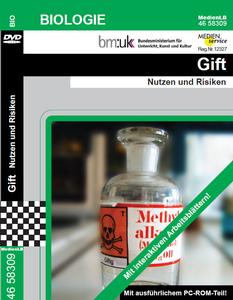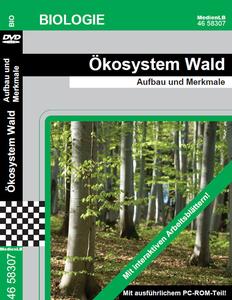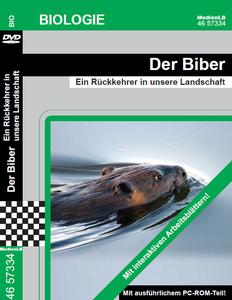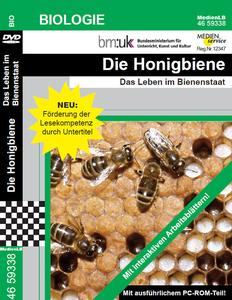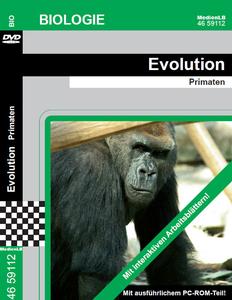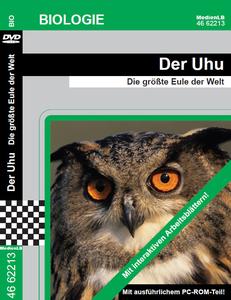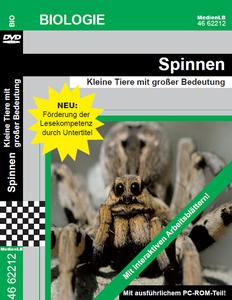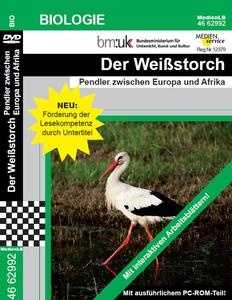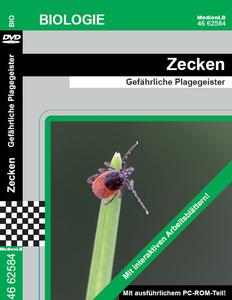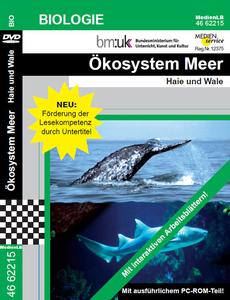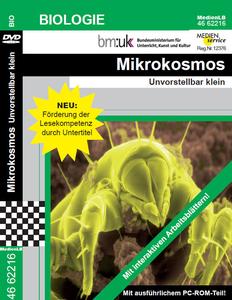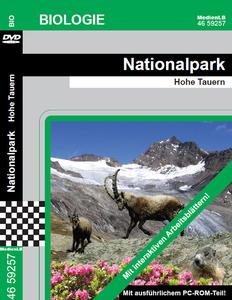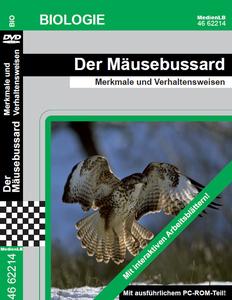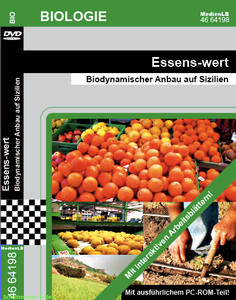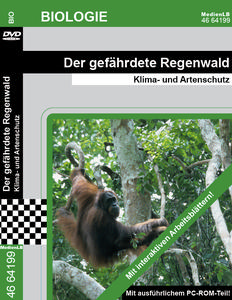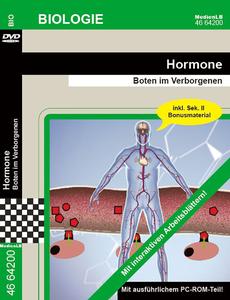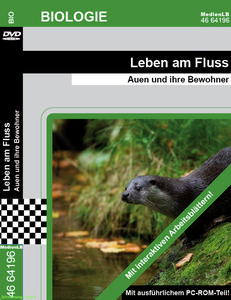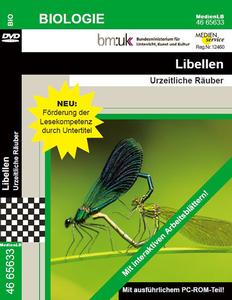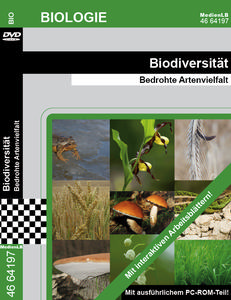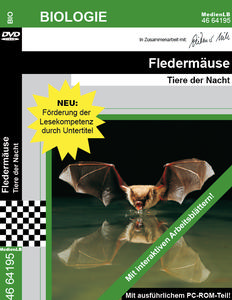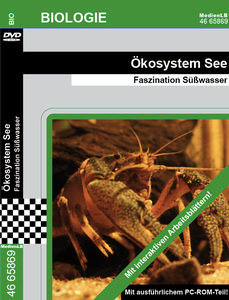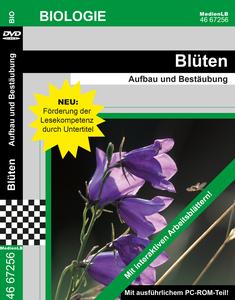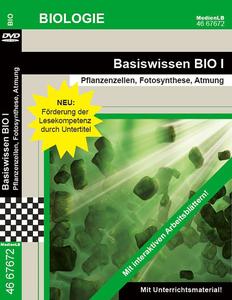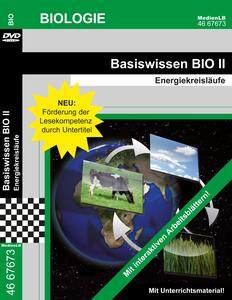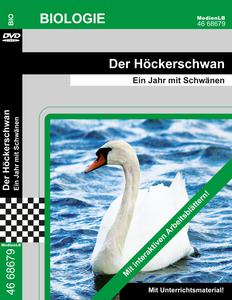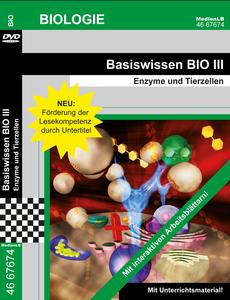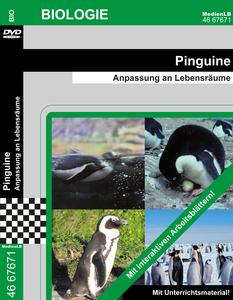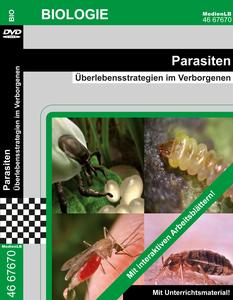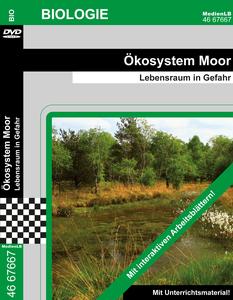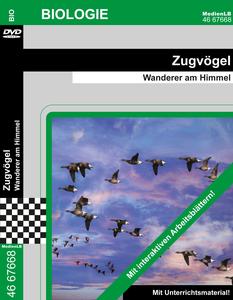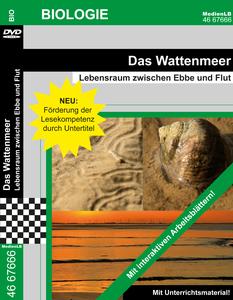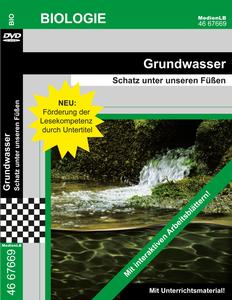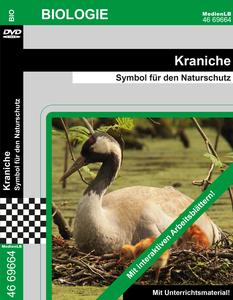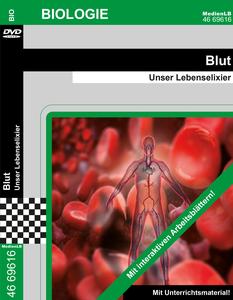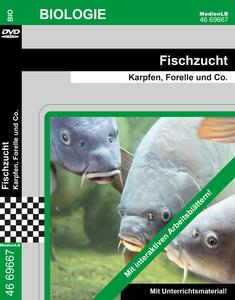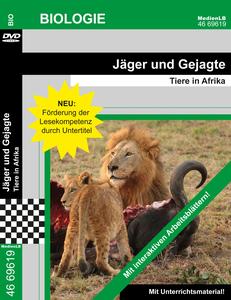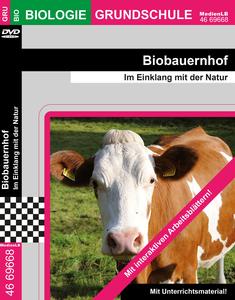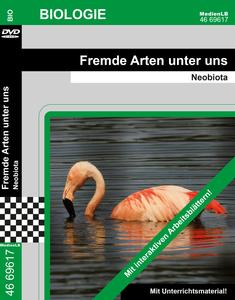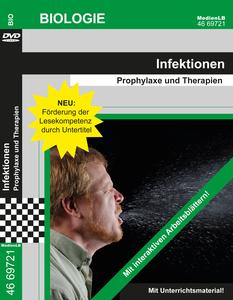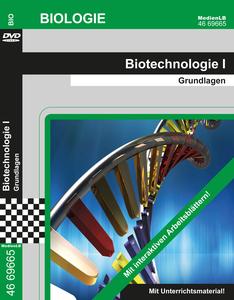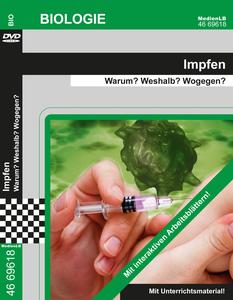-
Giraffes
Physique, habitat, socialization
The giraffe is a superlative mammal. It is considered the largest land mammal, has a neck up to two meters long and the pattern of its fur is as unique as the fingerprint of a human.
More about the DVD -
Jane Goodall
Biography and life's work
Jane Goodall is considered a pioneer among behavioral scientists in the world of chimpanzees.
More about the DVD -
Seals
Species, occurrence, behaviour
Seals belong to the group of water-living mammals. Unlike whales and manatees, which have completely switched to aquatic life, seals lead a life both in the water and on land. This makes these animals special.
More about the DVD -
Skin
Structure and function
It is essential for survival. It can cool the body, but must be protected from the cold as well as the sun. It changes with age. We are talking about the skin.
More about the DVD -
Genetic Code Sun
Deciphering the Code of Life
Life on Earth assumes a large variety of shapes. There is plant life and animal life. Protozoa live alongside human beings, ants alongside fish and elephants, a blowball alongside a cactus.
More about the DVD -
Joints
Structure and Function
To begin with, we distinguish between so-called “real“ and “fake” joints.
More about the DVD -
Conditioning
Pavlovian Dog and Skinner-box
The theory of classical conditioning is one of several learning theories which explains how behaviours can result from stimulation without, however, taking into consideration the processes in the brain (black box).
More about the DVD -
Invertebrates
Snails, Worms, Insects and Spiders
The term “invertebrates” was coined by the French zoologist and botanist Jean-Baptiste de Lamarck in the early 19th century. He was the first to address the classification of the then so-called “lower animals” and divided them into different categories and classes.
More about the DVD -
Starling
Bird of the Year
In general, male and female starlings look very much alike. In spring, starlings assume their nuptial plumage, in autumn, after moulting, they wear their eclipse plumage.
More about the DVD -
Bean
Structure, Distribution and Use
The word bean refers to both the seeds and the pods surrounding them and often even the whole bean plant. It is not easy to get an overview of the different types of bean plants. Their variety is due to, among other things, their different origins.
More about the DVD -
-
Enzymes
Chemical Reactions
Almost every biochemical reaction in living organisms is regulated and controlled by enzymes. Without enzymes we could not breathe, digest food and the hereditary information in our cells could not be repaired and copied.
More about the DVD -
-
Muscles
Structure, Function, Training
When we talk about muscles, we mostly think of those we can see. These are the arm, chest, abdominal and leg muscles.
More about the DVD -
Elephants
Anatomy, Sense, Behavior
Elephants belong to the order of Proboscidea. On the one hand they are classed with the highly developed mammals, on the other hand we consider them quite primeval animals. Which is not too far out because a near relation, the mammoth, still lived during the last ice age.
More about the DVD -
Hidden Sugar
Avoid the Sweet Trap!
Sugar is ever-present in our lives. It is an important supplier of energy, but too much sugar poses a threat to our health.
More about the DVD -
Typical Boy, Typical Girl
Innate and Acquired
QUOTE girl: "Lots of girls play with Barbie dolls." QUOTE boy: "Typical boys, that’s rather ... more football and more fighting ..."
More about the DVD -
Fossils
Formation and Places of Discovery
Is it possible for a stone to tell us a story about what animals and plants used to be there in former times? And “former times” does not mean a few centuries but millions of years.
More about the DVD -
Equilibrium
Maintaining a Balance
All things have weight. Some things are heavy. Others are light. Often you would like to strike a balance. What is light should get heavier and what is heavy should get lighter. When bodies, substances or conditions are balanced, we call it equilibrium.
More about the DVD -
Human Brain
Structure and Function
Every organism, no matter whether it is an earthworm, a snail, a fish or a human being, takes in information from the environment through differently structured sensory organs.
More about the DVD -
Blackbirds
Features and Behaviour
The blackbird is one of our most common and best-known songbirds. The nice thing about the blackbird is that it cannot be confused with many other bird species.
More about the DVD -
Single-cell Organisms
Biodiversity on a Small Scale
The Earth is the only planet known to us where liquid water ─ the source of life ─ exists. Every creature has its own metabolism, which is controlled via an information carrier – the genome.
More about the DVD -
Common European Adder
Habitat and Mode of Life
The common (European) adder is extremely wide-spread across the globe. The common adder owes its German name “Kreuzotter” (“cross adder”) to the broad zigzagged band on its back, or so-called “cross” in German.
More about the DVD -
Hamsters
Characteristics, Mode of Life, Protection
Hamsters are small rodents that have four sharp incisors. They are related to mice. With their small beady eyes and the constantly sniffing nose the crepuscular and nocturnal animals look cute.
More about the DVD -
Genetics
Introduction to Genetic Theory
Genetics means something like genealogy, origin and, in contemporary terminology, also the study of inheritance.
More about the DVD -
Hygiene
Preventing Disease, Promoting Health
Epidemics such as the cholera or the plague and diseases like the Spanish flu were the causes of the deaths of many people throughout the centuries.
More about the DVD -
Hare and Rabbit
Similarities and Differences
How do we distinguish between a hare and a rabbit? At first sight, both look confusingly alike for both have long ears and a stumpy tail.
More about the DVD -
Menstrual Cycle
First Period
Sex education seminar at a girls’ school, 5th-year class. The girls here are 10, 11 years old. Topic: “menstrual cycle and first period“.
More about the DVD -
Slow Worm
Characteristics, Adjustment, Behaviour
The slow worm is a small, completely harmless lizard, which – contrary to its German name “Blindschleiche”– is perfectly able to see and is often mistaken for a snake because it has no legs and an elongated body.
More about the DVD -
Human Liver
Structure and Function
Normally you do not feel it, it does not beat like the heart, neither can we feel it like the lungs when we breathe in and out – nevertheless, it is one of our most important organs: the liver.
More about the DVD -
Ducks
Appearance, Behaviours, Species
Ducks are our best-known water birds. You can watch them on almost any large body of water. Although we come across them frequently, most of us know very little about the lives of ducks. But it is worth our while to look at them more closely.
More about the DVD -
Eye
Structure and Function
The eye is one of our most important sense organs. It provides direct access to the world. We perceive most information we are flooded with and which has an impact on us via our visual sense.
More about the DVD -
Neanderthal Man
History of Mankind
For 250,000 years the Neanderthal dominated Europe during the last glacial period until he died out about 30,000 years ago.
More about the DVD -
Pike
Underwater Predator
The pike is one of our largest native predatory fish. Its mouth is studded with razor-sharp teeth. Its elongated streamlined body makes it as fast as an arrow. The pike is the perfect underwater hunter. At the same time, however, it is prey to a lot of other animals and a popular food fish.
More about the DVD -
Human Lung
Structure and Function
Only rarely do we notice that we need them: our lungs. Mostly, we breathe unconsciously and shallowly – especially if we have a sitting job.
More about the DVD -
Chickens
Behaviour, Races and Breeding
In the story of “Max and Moritz“it says: To most people who have leisure Raising poultry gives great pleasure;
More about the DVD -
The Human Heart
Structure and Functioning
Our life is determined by our heart. In reality as well as symbolically. When we love someone, we lose our heart to that person. When we are courageous, we stand up for something with all our heart. But when we are frightened, our hearts may well be in our boots now and then.
More about the DVD -
Geese
Domestic Geese and Wild Geese
“They’re gabbling like geese”, “she’s such a stupid goose” or “silly goose”– those are commonly known sayings. But geese are neither stupid nor chatty, gabbling is their language.
More about the DVD -
Animals in the Forest
Fox, Raccoon, Deer and Others
The forest is home to many animals.
More about the DVD -
Biotechnology III
Between Progress and Responsibility
Biotechnological knowledge and applications can be divided into several subareas. For easy orientation and distinction, the respective fields have been assigned a specific colour.
More about the DVD -
Sticklebacks
Change in Males during Spawning Time
More than fifty fish species live in our lakes and rivers. The sticklebacks count among the smallest native freshwater fish.
More about the DVD -
Allergies
Development and Therapy
The flowering spring meadow, the cute cat from the neighbour’s garden or the bowl with strawberries are a source of joy to most people.
More about the DVD -
Carnivorous Plants
Carnivores
Up to the middle of the 19th century it was believed that plants exclusively served as a nutritional staple to be eaten by herbivorous primary consumers.
More about the DVD -
Snails and Their Habitats
Biodiversity and Survival Strategies
They are slow, really slow ... they are soft, they are slimy ...and greedy. Most of us look at them with disgust. But snails and their relatives are fascinating, useful animals and true survivors.
More about the DVD -
Metabolic Disorder Diabetes
Regulation of the Blood Glucose Level
Big break in the school yard of the Freiherr vom Stein school. The pupils are talking or playing. Amidst them is Felix, twelve years old. He is always with them.
More about the DVD -
The Ear
Structure, Function and Care
Large or small, narrow or broad, round or angular. Our ears may be of a variety of shapes.
More about the DVD -
Heath
Cultural Landscape in Transformation
One of the last big heathland areas in Germany is located west of the Lower Saxon town of Lüneburg – the Lüneburg Heath Nature Reserve.
More about the DVD -
Earthworm
Structure and Behaviour
It is slippery, soft and slimy, burrows in the moist soil and many just find it disgusting – the earthworm.
More about the DVD -
Biotechnology II
Revolution in Medicine
The results of the fundamental research in genetics and genetic engineering are the basis for the further development of biotechnology, whose basics have already been covered in part I of the biotechnology series. In conjunction with findings in microbiology, biotechnology has made significant progress.
More about the DVD -
Sharks
Characteristics and Hazards
The enormous size of the jaws and the frightening teeth of sharks have always attracted people's interest. Horrifying news of attacks on humans did the rest – "Jaws“: Steven Spielberg turned this best seller by Peter Benchley into a world-famous film.
More about the DVD -
Horses
Birth, Care and Species - appropriate
They are the epitome of power and elegance. Man domesticated them long after dog and cat, they provided meat, were strong agricultural helpers pulling ploughs and other implements.
More about the DVD -
Alexander von Humboldt
His Work and Legacy up to Our Time
The name of Alexander von Humboldt, who is considered the last polymath and is still admired as second discoverer in Latin America, is omnipresent. Schools, ships, mountains, rivers, squares are named after him; but above all animals and plants were given his name.
More about the DVD -
Mice, Small Rodents
Characteristics of Various Species
Mice are found almost everywhere. The small agile rodents live in forests, meadows and fields but also in our very midst. They have long or short tails, big or small ears. Even if they differ on the outside, all of them have one thing in common: sharp incisors with which they gnaw their way through life.
More about the DVD -
Biotope: Gravel Pit
Home to Rare Plants and Animals
The forest has been cleared, the bridge is already in place, too. Only the road surface is missing. In Germany, every day an area the size of 125 soccer fields disappears under concrete and asphalt.
More about the DVD -
Structure of the Forest
Division into Layers
Forests are more than an accumulation of trees. The individual tree is more than a valuable source of wood. From its roots to its crown, it offers habitats to a variety of the most different creatures.
More about the DVD -
Whales
Way of Life, Threats, Protection
Humans have always found them fascinating: whales, the giants of the seas. Whales can be classified either as baleen whales or toothed whales.
More about the DVD -
Habitats in Human Hands
Changing Nature
Forests, hedges, heathlands or colourful meadows are the epitome of unspoilt nature for us.
More about the DVD -
Large Herbivores
Megaherbivores
For a long time it was believed that, thousands of years ago, Central Europe was covered with almost uninterrupted primeval forests. Squirrels could cross these forests from the Alps to the North Sea without once touching ground – or so the common assumption was.
More about the DVD -
Mammals I
Vertebrates 5
When we talk about animals in everyday conversation, we mostly talk about mammals. Mammals live in water, on land and in the air
More about the DVD -
Birds
Vertebrates 4
This DVD from the Vertebrates series comprehensively introduces birds by means of various examples of indigenous, tropical and polar bird species.
More about the DVD -
Reptiles
Vertebrates 3
This DVD offers a clearly structured overview over reptiles with an emphasis on the following aspects: The origin of reptiles is proven by fossil finds from all over the world.
More about the DVD -
Amphibians
Vertebrates 2
More than 350 million years ago, the evolution of amphibians set in. Amphibians developed from fish – a first step towards life on land. Diverse reproduction strategies, manifold forms of appearance and a broad spectrum of sizes, ranging from the tiny Brazil litter frog to the giant salamander, constitute the special characteristics of the class of amphibians.
More about the DVD -
Fish
Vertebrates 1
This DVD offers a clearly structured overview of fish with an emphasis on the following aspects: The typical body build of fish and their adaptation to the water habitat are shown. The fish skeleton proves that they are vertebrates.
More about the DVD -
Vertebrates
Development and Diversity
This DVD introduces the members of vertebrates group existing today, illustrated by various examples. The phyloge- netic development, which started in the primeval oceans, is shown in detail by means of homologous skeleton structures.
More about the DVD -
Mushrooms
An Unknown Realm
This DVD offers a clearly structured survey of mushrooms with an emphasis on the following aspects: Mushrooms of different shapes and colours present their fruit bodies. The reproduction by means of spores is shown with different kinds of mushrooms.
More about the DVD -
Contraception
Love and Responsibility
In view of a considerable number of teenage pregnancies and commencement of sexual activities at an average age of 15, the topic of contraception is extremely important in lower secondary school.
More about the DVD -
The Ladybird
Insect of the Year 2006
The seven-spotted ladybird was chosen insect of the year 2006. Besides the characteristics of this and other ladybird species, the film also shows the reproduction and develop- ment of various species and their geographic ranges.
More about the DVD -
Succession
The Resettlement of a Biotope
At the Hirschkopf near Mössingen, on April 13, 1983, 700,000 truckloads of rock slid down into the valley – a “biological ground zero” was created. After more than 20 years, the slide area has developed from a hostile scree desert devoid of humus into an ecological treasure and was included in the UNESCO list of national geotopes.
More about the DVD -
Aids
A Temporary Life
AIDS is an issue that remains critical in view of the globally increasing infection rates. This DVD informs pupils on the immune deficiency disease and the ways in which the infection is passed on, it shows the scale of the pandemic and tries to make the young viewers aware of the difficult situation of those afflicted by it.
More about the DVD -
Air and Respiration
Learning Circle
The subject of air and respiration offers a variety of starting points for an interdisciplinary approach. This DVD contains essential aspects for teaching pupils in the first years of secondary school.
More about the DVD -
Bees, Bumblebees and Wasps
Observation and Protection
Our smallest domestic animals, the honey bees, belong to the insect order of hymenoptera just like bumblebees, wasps and ants.
More about the DVD -
Poison
Benefits and Risks
Throughout history, humans have always tried to understand the mysterious power of toxins. In doing so, they sometimes discovered healing medicine, and sometimes lethal mixtures.
More about the DVD -
Ecosystem Forest
Structure and Characteristics
The forest – it is not only a collection of trees but a dynamic symbiosis of many different plants and animals. Their com- plex interdependence forms the basis of the ecosystem.
More about the DVD -
The Beaver
A Returnee to Our Contryside
Natural river and lake areas are becoming increasingly rare. With expensive measures to restore them to their natural state, efforts are being made to recreate them. Here, an animal may be helpful: the beaver.
More about the DVD -
The Honey Bee
Life in the Beehive
Untiringly, the honey bees fly from flower to flower, constantly in search of pollen and sweet nectar. These busy workers live together in a complex social system an insight into which is provided by this film. In vivid pictures, it describes the life of the honey bee in the bee colony and deals with the inhabi- tants of the beehive and their strict division of labour.
More about the DVD -
Evolution
Primates
Of all mammals existing today, the primates have the oldest phylogenetic tree. This film shows on the basis of extant species of the order of primates, which we humans also belong to, the phylogenetic tendencies in evolution from the treeshrew to prosimians, monkeys and apes to the genus homo.
More about the DVD -
The Eurasian Eagle Owl
The Largest Owl of the World
With a body length of 60 to 75 cm and a wingspan of up to 170 cm, the Eurasian eagle owl is the largest owl in the world. It is also referred to as “king of the night skies”.
More about the DVD -
Spiders
Small Animals of Great Significance
Spiders evoke fear and disgust with many people. Spiders living in or near houses are often killed by humans or vacuumed away with their vacuum cleaners. But that does not need to happen! Spiders contribute to the biological balance by eating mosquitoes, flies and other pests. A world without spiders would be scary!
More about the DVD -
The White Stork
Commuter between Europe and Africa
People have always found the white stork fascinating. It is a large, conspicuous bird, which exposes itself to human curiosity by the choice of its nesting places, therefore people tend to assign meaning to its behaviour. Today, the white stork is still believed to bring good luck.
More about the DVD -
Ticks
Dangerous Pests
Already the dinosaurs, which populated the Earth some 90 million years ago, were familiar with the tiny, dangerous pests, and the Greek poet Homer attributed healing and potency-enhancing effects to them in the late 8th century BC – however, only in pulverised form.
More about the DVD -
Ecosystem Sea
Sharks and Whales
The oceans have been the largest connected ecosystem of the world since hundreds of millions of years. All life originated here, and a stable system ranging from single-cell plants and animals to huge vertebrates has been established.
More about the DVD -
Microcosm
Unimaginably Small
We perceive the world we live in with our sense organs. However, perception with our senses represents only a limited part of the cosmos we live in. There is a world eluding the perception of our eyes. It exists hidden away for its cosmos is extremely small. The world of microcosm. This world is full of fascination and surprises.
More about the DVD -
Nationalpark
Hohe Tauern
In the Hohe Tauern National Park you can experience with all your senses the peaceful coexistence of wild nature and human creativity, the diversity of nature as well as its significance as an ecosystem preserve in the heart of Europe. Pristine forests, species-rich mountain meadows and the alpine primeval landscape of the highest mountains in Austria quite naturally evoke a thirst for knowledge.
More about the DVD -
The Common Buzzard
Characteristics and Behaviour
The common buzzard is a well-known native bird of prey. You can often see it flying above fields or sitting by the roadside. But what are the typical characteristics and behaviour patterns of the common buzzard? The film covers the biological classification of the common buzzard, its characteristics and behaviour.
More about the DVD -
Worth Eating
Biodynamic Farming in Sicily
Bio/eco – words that earlier on were likely to cause smiles but today are simply part of a modern lifestyle. Taking care that textiles, cars and especially victuals are produced ecologically compatible is a trend. However, it is not only a bad conscience that induces us to buy a bio apple instead of sprayed apples.
More about the DVD -
Endangered Rainforest
Climate and Species Protection
The small proportion of about 7% of the entire surface of the earth covered by rainforest is of global significance from various perspectives. The survival of tropical rainforests has been on the agenda of all conservationist organisations for decades. But in spite of all their endeavours and the many political promises made, more hectares of rainforest are destroyed every day than ever before.
More about the DVD -
Hormones
Hidden Messengers
Hormones influence our lives. Just like our nervous system, they transmit information in our bodies. When our hormonal balance is disrupted, our behaviour changes and we may fall ill. But what are hormones? Why have they got such a big influence? Where are they produced? And how do they work? The film leads us inside the human body – into the world of hormones.
More about the DVD -
Life along the River
Floodplains and their Inhabitants
Rivers are important ecosystems and habitats for plants and animals. The biodiversity of animals and plants in and on the water is enormous. People, too, have always appreciated the river as a living space and have used it in various ways up to now.
More about the DVD -
Dragonflies
Primeval Predators
The dragonfly – a fascinating hunter with incredible skills: with its iridescent wings, which make up two per cent of its body weight, it manoeuvres artistically in the air and serves as a model for ultra-lightweight design. A survival specialist that has been dwelling on earth for 320 million years.
More about the DVD -
Biodiversity
Threatened Variety of Species
The exact numbers of plant and animal species on earth are unknown. What we do know, though, is that there is a dramatic decline in the variety of species mainly triggered by man. The "threats to biodiversity" as well as their causes are the topics of this film. It illustrates the reckless exploitation of the resources of the earth on land and in the oceans.
More about the DVD -
Bats
Night Animals
Bats are the only mammals that can fly actively. In mythology they represent the dark element and were the inspiration behind the invention of vampire stories. On account of their nocturnal way of life and their dark appearance, they are considered scary by many people. But the nocturnal hunters are by no means keen on human blood. They mainly hunt insects, thus assuming an important role as natural pest controllers
More about the DVD -
Ecosystem Lake
Freshwater Fascination
Lakes are stagnant waters that look quite peaceful to us. But the quiet is deceptive: above and below the water surface, life is anything but peaceful. Phytoplankton and zooplankton are eaten by small predators such as polyps or hydrachnidiae. Toebiters, dragonfly and beetle larvae are food for the water scorpion.
More about the DVD -
Blossoms
Structure and Pollination
In impressive pictures several interesting biological topics are conveyed by this film: knowledge of the structure of blossoms, their variety of forms as well as significance and purpose of their colours and scents.
More about the DVD -
Basics of BIOLOGY I
Plant Cells, Photosynthesis, Respiration
Basics of BIOLOGY I – Plant Cells, Photosynthesis, Respiration Basics of Biology examines general biological issues that help to expand and consolidate basic biological knowledge. The first film of this series deals with the structure of the plant cell. It centres around the structure and function of plant tissue such as the xylem, root cells and stomata as well as the functions of the chloroplasts
More about the DVD -
Basics of Biology II
Energy Cycles
In its first chapter, Basics of Biology II deals with the food chain. The producers as the basis of the food chain and the consumers, the herbivores and carnivores, are introduced /presented. Further focus points are the energy intake through food as well as the energy losses connected with it.
More about the DVD -
Mute Swan
Swans throughout the Year
Swans are an ornament to our waters. The majestic birds with their snow-white plumage are considered the very epitome of beauty and purity. Not every swan, however, is white. It is the Mute Swan that has inspired people’s imagination for ages. Seemingly an old acquaintance, it has nevertheless a great many unknown features for us to discover.
More about the DVD -
Basics of Biology III
Enzymes and Animal Cells
DVD: Basics of Biology III - Enzymes and Animal Cells What is the importance and function of enzymes? The lock-and-key principle is explained and, based on amylase and katalase, the dependence of reaction speed and intensity of effect on temperature and pH-value can be seen.
More about the DVD -
Penguins
Adaptation to Habitat
Most people know penguins only from the zoological garden. There they arouse many visitors’ interest. This is, on the one hand, because of their peculiar black-and-white colouring, which reminds you of a tail coat, on the other hand, because of their upright walk.
More about the DVD -
Parasites
Invisible Survival Strategies
Parasites are not a small group of organisms, as many believe. Parasitism is a specific mode of life in which one creature, a parasite, lives on another creature and feeds on it. Apart from well-known parasites such as ticks or bed bugs, also animals like the cuckoo or the ichneumon fly and plants, for example the mistletoe, live parasitically.
More about the DVD -
Ecosystem Bog
Endangered Habitat
Bogs are rough, sparse and inaccessible regions, neither water nor land. This applies in particular to raised bogs. One wrong step in this soaking wilderness might be fatal. How a bog is formed was unknown to people for thousands of years. After the last ice age, that is about 10,000 years ago, bog formation began. Enormous amounts of water were released as a consequence of the melting of the ice shields.
More about the DVD -
Migratory Birds
Wanderers in the Sky
Wenn Vogelarten die Jahreszeiten an unterschiedlichen Orten verbringen, werden sie als Zugvögel bezeichnet. Mehrere Milliarden von ihnen sind jährlich unterwegs. Alljährlich machen sie sich von ihren Brutplätzen auf den Weg in ihr Winterquartier und zurück. Dabei fliegen manche Arten Tausende Kilometer.
More about the DVD -
Wadden Sea
Habitat between Ebb and Flow
Wadden Seas are parts of seas or landscapes on the coast respectively. Characteristic of these landscapes is that Wadden Seas are particularly exposed to the tides. There are many Wadden Seas in the temperate zones all over the world. The sea accessible by wading is usually flooded twice a day during high tide. The areas drying out at low tide are called mudflats.
More about the DVD -
Groundwater
Treasure beneath Our Feet
When we open the tap, it gushes out: drinking water – clear and clean. It is our most important victual and can be replaced by NOTHING. On average every inhabitant of Germany consumes 125 litres every day! But where does our drinking water come from?
More about the DVD -
Cranes
Symbol of Nature Protection
They are counted among the most elegant and distinctive domestic birds. Due to their size, cranes can hardly be overlooked. Their call can be heard for miles. And: You hear them more and more often.
More about the DVD -
Blood
Our Elixir of Life
One moment of distraction and the damage is done: Tim has slipped and has scraped his knee. The wound begins to bleed. Back home, Tim is comforted by his mother and a plaster is put on the knee.
More about the DVD -
Fish Farming
Carp, Trout and Other Fish
Lakes, rivers and streams are the natural habitats of our freshwater fish. Some of them, such as carp, trout and char, are eaten as food fish.
More about the DVD -
Hunters and Hunted
Animals in Africa
The African night is not for sleeping. A lot is going on there. The hunters are lying in ambush and the preys are on alert.
More about the DVD -
Organic Farm
In Harmony with Nature
That is how we imagine an ideal farm. Free-range hens, cows are being driven from the pasture into the stable, a cat is straying across the yard, the dog is watching over everything...
More about the DVD -
New Species in our Environment
Invasive Species
More and more animal and plant species successfully spread far away from their original homes. They are organisms that with our assistance – or even alone – are disseminated further and further across the globe: they are called invasive species.
More about the DVD -
Infections
Prevention and Therapies
’Health isn’t everything but everything is nothing without health.‘ – This clever sentence comes from the German philosopher Arthur Schopenhauer.
More about the DVD -
Biotechnology I
Basics
Biotechnology is the application of science and technology to living organisms. Today, biotechnology plays an increasingly important role in everyday life.
More about the DVD -
Vaccination
Why? For What Reason? Against What?
It is only in recent years that a vaccination has existed that is supposed to lower the risk of getting cervical cancer. This vaccination can protect against specific, sexually transmitted human papillomaviruses that are considered one of the causes for cervical cancer. Even though we consider our high health status as a matter of course in Germany today, it is not so very long ago that in Europe, too, many people died of diseases such as smallpox or typhus or had to suffer from the after-effects of diseases like poliomyelitis...
More about the DVD
